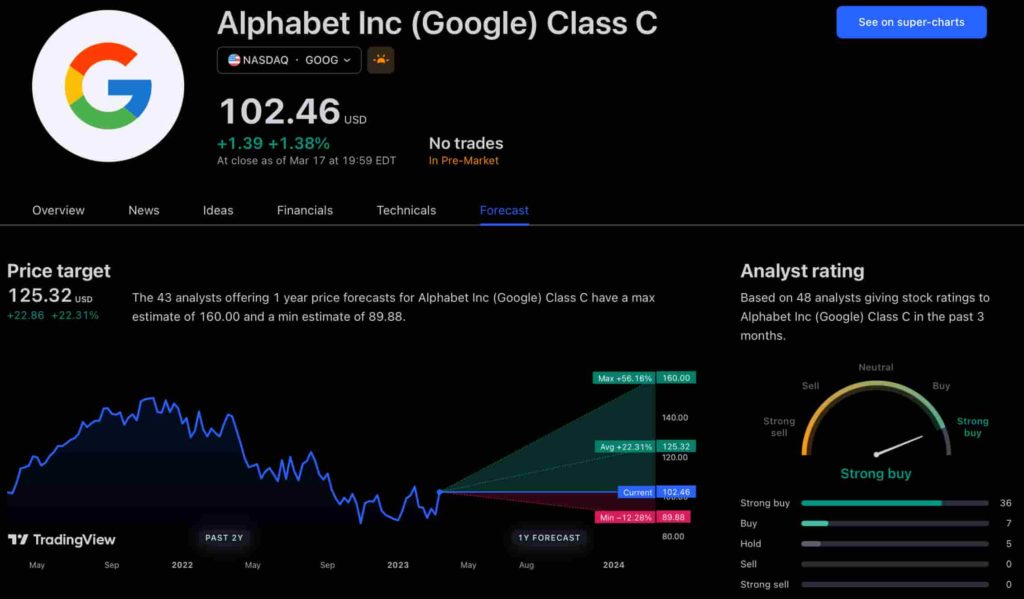The new app is called watchGPT and as I tipped off already, it gives you access to ChatGPT from your Apple Watch. Now the $10,000 question (or more accurately the $3.99 question, as that is the one-time cost of the app) is why having ChatGPT on your wrist is remotely necessary, so let’s dive into what exactly the app can do.
NEWS
Should You Publish Content on a Company Blog or Medium.com?
If you are (like so many content marketers) trying to allocate scarce resources and choose your channels wisely, you may have had this question come up: Should we publish on our own company blog or on Medium?
The short answer is that you don’t have to choose one or the other.
There are multiple ways to use Medium as part of a content marketing strategy.
In this post, we’ll explore several considerations that will help determine the best approach for your unique needs.
What Is Medium?
Medium is a publishing platform estimated to receive over 200 million visits per month.

The content you publish on Medium has the opportunity to tap into that monthly traffic and grow an audience.
Publishing content on Medium enables you to leverage Medium’s reach in order to build email newsletter subscribers and traffic to the company site.
The value of building an email subscriber base is in building a relationship with potential customers and alerting them to new content.
Publishing new content on Medium can help a company achieve multiple goals like:
- Sales.
- Email subscriber growth.
- Building brand awareness.
- Increasing traffic.
A content strategy that incorporates Medium.com is not limited to new content.
Publishers can “repurpose” older content by publishing it on Medium.
Content Repurposing Strategy on Medium.com
Repurposing content is doing more with the content you’ve already invested in creating.
Repurposing content could mean turning a blog post into a video, podcast, or infographic.
It might even mean updating and republishing the content on a site like Medium.
This method of republishing content on a third-party site is called syndicating content.
It’s not a crazy new tactic; in fact, newspaper brands have been doing it for decades.
How to Syndicate Content to Medium
The advantage of syndicating older content on a site like Medium is that the content is already created. By syndicating older content, the publisher receives the benefit of helping to give the content fresh attention.
Some content that has already been published tends to fade into the background as time goes on.
Yes, it can still rank — but sometimes it starts to slip.
By repurposing the content and syndicating it on Medium, publishers can give that content another flash of attention.
This can result in links and popularity which can help those older pages improve their performance in search.
Additionally, publishers don’t need to wait until content is old to syndicate it to Medium.
Content can be syndicated straight to Medium soon after it is published on the original site.
Whatever the age of the content you intend to syndicate, what matters most is its quality and that it is up-to-date.
Can You Use the Medium WordPress Syndication Plugin?
Medium used to publish a Medium WordPress plugin that connected to an API that helped WordPress publishers syndicate their content.
Unfortunately, that plugin has been disabled since August 19, 2019.

The Medium WordPress plugin had been languishing in a broken state for at least a year prior to their taking it down, so it really wasn’t a great option before, either.
A reply from Medium to their WordPress support page stated:
“Unfortunately, we are unable to support the WordPress plug-in any further.
As this is an open-source tool, we suggest you file a ticket for the community to review and fix.”
How to Import Content to Medium for Syndication
Medium now encourages publishers to use their import tool.
These are Medium’s instructions for importing articles for publication on Medium.com:
- “On your homepage, click on your profile picture and click Stories.
- Click Import a story in the top-right corner.
- Paste the URL of the story you’d like to import into the field and click Import.
- Click See your story.
- Edit your post and click Publish to publish it on your profile.”
Will Syndicating Content on Medium Hurt Your Site?
No, syndicating content to Medium.com will not hurt your website’s rankings.
If you import an article using Medium’s import tool, Medium will automatically add a canonical URL that tells all search engines the URL of the original publisher of the article.
“Imported stories will automatically apply a canonical URL referencing the original source material.”
Therefore, all links that are generated to your syndicated article on Medium are attributed by Google to the original publisher.
That’s the purpose of a canonical meta tag.
Publishing Content on a Company Blog
There are many valid reasons to exclusively publish content on a company blog.
The most obvious benefit is that users come to think of the company blog as a valued resource.
That, in turn, translates into reader growth, reader recommendations to their friends and colleagues, and to links.
Links and reader popularity may help the company blog to rank in search.
Become a Destination with Exclusive Content
Many marketers think in terms of relying on search traffic.
But there’s another approach that focuses on making a website a destination in itself.
Sites that focus on becoming a destination can have good rankings as a result, because all of those returning visitors tend to generate signals of popularity that Google can pick up on.
Google’s John Mueller remarked on how a site can distinguish itself so that Google notices:
“You really need to make sure that what you’re providing is unique and compelling and high quality so that our systems and users in general will say, I want to go to this particular website because they offer me something that is unique on the web and I don’t just want to go to any random other website.”
How & Why to Promote Company Blog Content
Part of the process of building popularity in search and with people is to let others know that the company blog content exists.
There is no “build it and they will come” option.
The process of building links can be difficult.
Yet it can be made less difficult.
I won’t go into a full-blown content and link promotion strategy but there are four basic approaches for building links and audience to a site, increasing the site’s popularity with people online:
- Identify the content topics that other sites tend to link to and build that kind of content.
- Be ready to rapidly generate content on trending topics.
- Identify sites that link out to sites similar to yours and let them know you exist.
- Build relationships with sites where your audience/potential customers tend to congregate and build awareness there through all available opportunities, regardless if there is a link involved. The point is to build awareness with an audience.
Links are important for helping to build an audience to a company blog, as Google’s John Mueller recently stated:
“Links are really important for use to find content initially. So it’s like if nobody links to your website ever then we’re going to have a hard time recognizing that it even exists.”
Dig into Link Building for SEO: A Complete Guide to learn more.
Benefits of Exclusive Content
There are no shortcuts to building popularity with an audience.
There is only a focused strategy to appeal to an audience, the lack thereof being a reason some company blogs end up less successful than they can be.
For example, one common reason company blogs fail to build an audience is a focus on building “comprehensive” content that beats out the competition on scale and quantity.
Being comprehensive is a good thing, but it’s not always what users want.
Some topics deserve an in-depth approach.
Some topics benefit from being broken up into multiple subtopics because that’s how users approach learning about it.
Rather than trying to impress a search engine with the authority, quality, and comprehensiveness of the content, publishers find success by focusing on their readers.
Once a company learns how to focus its blog content on readers and what their audience really wants to learn, do and become, that’s when traffic will increase and the site can become a destination that doesn’t need to rely on readers being directed from other sites.
Content Strategy Benefits & Trade-offs
There are benefits and trade-offs to a strategy that incorporates publishing on Medium or that focuses on a company blog.
Old content may benefit from publication on Medium because it relights the fire of popularity and renews attention on the old content in a new audience.
New content on a new blog can benefit from syndication on Medium as part of a strategy of making the presence of a new blog known to the wider world.
Finally, publishing content that is exclusive to Medium can benefit a corporate or commercial site that doesn’t really have the necessity or desire for a blog on their site.
In a way, the question of whether to publish on Medium (exclusively or syndicated) or to publish exclusively on a company blog is a question of context and the circumstances of the particular company.
If the company doesn’t have room on their site to accommodate a blog (because they aren’t a “content site” for example) then that will certainly make the choice to publish on Medium more obvious.
On the other hand, if the goal is to establish a site as a destination, sporadically publishing on Medium can be a way to attract attention to the site as part of an awareness-building campaign.
Or, perhaps a company may choose to not publish on Medium at all because it is a general type of site and there may be better rewards on focusing exclusively on promoting the site specifically within the given niche.
Whichever approach is taken, remember to build that strategy on the idea of writing to the needs and wants of readers.
Many signals of popularity, such as searches for a domain or links, are derived from impressing people — not search engines.
More Resources:
Image Credits
All screenshots taken by author, December 2020
Facebook Faces Yet Another Outage: Platform Encounters Technical Issues Again

Uppdated: It seems that today’s issues with Facebook haven’t affected as many users as the last time. A smaller group of people appears to be impacted this time around, which is a relief compared to the larger incident before. Nevertheless, it’s still frustrating for those affected, and hopefully, the issues will be resolved soon by the Facebook team.
Facebook had another problem today (March 20, 2024). According to Downdetector, a website that shows when other websites are not working, many people had trouble using Facebook.
This isn’t the first time Facebook has had issues. Just a little while ago, there was another problem that stopped people from using the site. Today, when people tried to use Facebook, it didn’t work like it should. People couldn’t see their friends’ posts, and sometimes the website wouldn’t even load.
Downdetector, which watches out for problems on websites, showed that lots of people were having trouble with Facebook. People from all over the world said they couldn’t use the site, and they were not happy about it.
When websites like Facebook have problems, it affects a lot of people. It’s not just about not being able to see posts or chat with friends. It can also impact businesses that use Facebook to reach customers.
Since Facebook owns Messenger and Instagram, the problems with Facebook also meant that people had trouble using these apps. It made the situation even more frustrating for many users, who rely on these apps to stay connected with others.
During this recent problem, one thing is obvious: the internet is always changing, and even big websites like Facebook can have problems. While people wait for Facebook to fix the issue, it shows us how easily things online can go wrong. It’s a good reminder that we should have backup plans for staying connected online, just in case something like this happens again.
NEWS
We asked ChatGPT what will be Google (GOOG) stock price for 2030

Investors who have invested in Alphabet Inc. (NASDAQ: GOOG) stock have reaped significant benefits from the company’s robust financial performance over the last five years. Google’s dominance in the online advertising market has been a key driver of the company’s consistent revenue growth and impressive profit margins.
In addition, Google has expanded its operations into related fields such as cloud computing and artificial intelligence. These areas show great promise as future growth drivers, making them increasingly attractive to investors. Notably, Alphabet’s stock price has been rising due to investor interest in the company’s recent initiatives in the fast-developing field of artificial intelligence (AI), adding generative AI features to Gmail and Google Docs.
However, when it comes to predicting the future pricing of a corporation like Google, there are many factors to consider. With this in mind, Finbold turned to the artificial intelligence tool ChatGPT to suggest a likely pricing range for GOOG stock by 2030. Although the tool was unable to give a definitive price range, it did note the following:
“Over the long term, Google has a track record of strong financial performance and has shown an ability to adapt to changing market conditions. As such, it’s reasonable to expect that Google’s stock price may continue to appreciate over time.”
GOOG stock price prediction
While attempting to estimate the price range of future transactions, it is essential to consider a variety of measures in addition to the AI chat tool, which includes deep learning algorithms and stock market experts.
Finbold collected forecasts provided by CoinPriceForecast, a finance prediction tool that utilizes machine self-learning technology, to anticipate Google stock price by the end of 2030 to compare with ChatGPT’s projection.
According to the most recent long-term estimate, which Finbold obtained on March 20, the price of Google will rise beyond $200 in 2030 and touch $247 by the end of the year, which would indicate a 141% gain from today to the end of the year.
Google has been assigned a recommendation of ‘strong buy’ by the majority of analysts working on Wall Street for a more near-term time frame. Significantly, 36 analysts of the 48 have recommended a “strong buy,” while seven people have advocated a “buy.” The remaining five analysts had given a ‘hold’ rating.

The average price projection for Alphabet stock over the last three months has been $125.32; this objective represents a 22.31% upside from its current price. It’s interesting to note that the maximum price forecast for the next year is $160, representing a gain of 56.16% from the stock’s current price of $102.46.
While the outlook for Google stock may be positive, it’s important to keep in mind that some potential challenges and risks could impact its performance, including competition from ChatGPT itself, which could affect Google’s price.
Disclaimer: The content on this site should not be considered investment advice. Investing is speculative. When investing, your capital is at risk.
NEWS
This Apple Watch app brings ChatGPT to your wrist — here’s why you want it

ChatGPT feels like it is everywhere at the moment; the AI-powered tool is rapidly starting to feel like internet connected home devices where you are left wondering if your flower pot really needed Bluetooth. However, after hearing about a new Apple Watch app that brings ChatGPT to your favorite wrist computer, I’m actually convinced this one is worth checking out.
-

 MARKETING7 days ago
MARKETING7 days agoRoundel Media Studio: What to Expect From Target’s New Self-Service Platform
-

 SEO6 days ago
SEO6 days agoGoogle Limits News Links In California Over Proposed ‘Link Tax’ Law
-

 SEARCHENGINES6 days ago
SEARCHENGINES6 days agoGoogle Core Update Volatility, Helpful Content Update Gone, Dangerous Google Search Results & Google Ads Confusion
-
SEARCHENGINES7 days ago
Daily Search Forum Recap: April 12, 2024
-

 SEO6 days ago
SEO6 days ago10 Paid Search & PPC Planning Best Practices
-

 MARKETING6 days ago
MARKETING6 days ago2 Ways to Take Back the Power in Your Business: Part 2
-

 MARKETING4 days ago
MARKETING4 days ago5 Psychological Tactics to Write Better Emails
-

 PPC6 days ago
PPC6 days agoCritical Display Error in Brand Safety Metrics On Twitter/X Corrected














